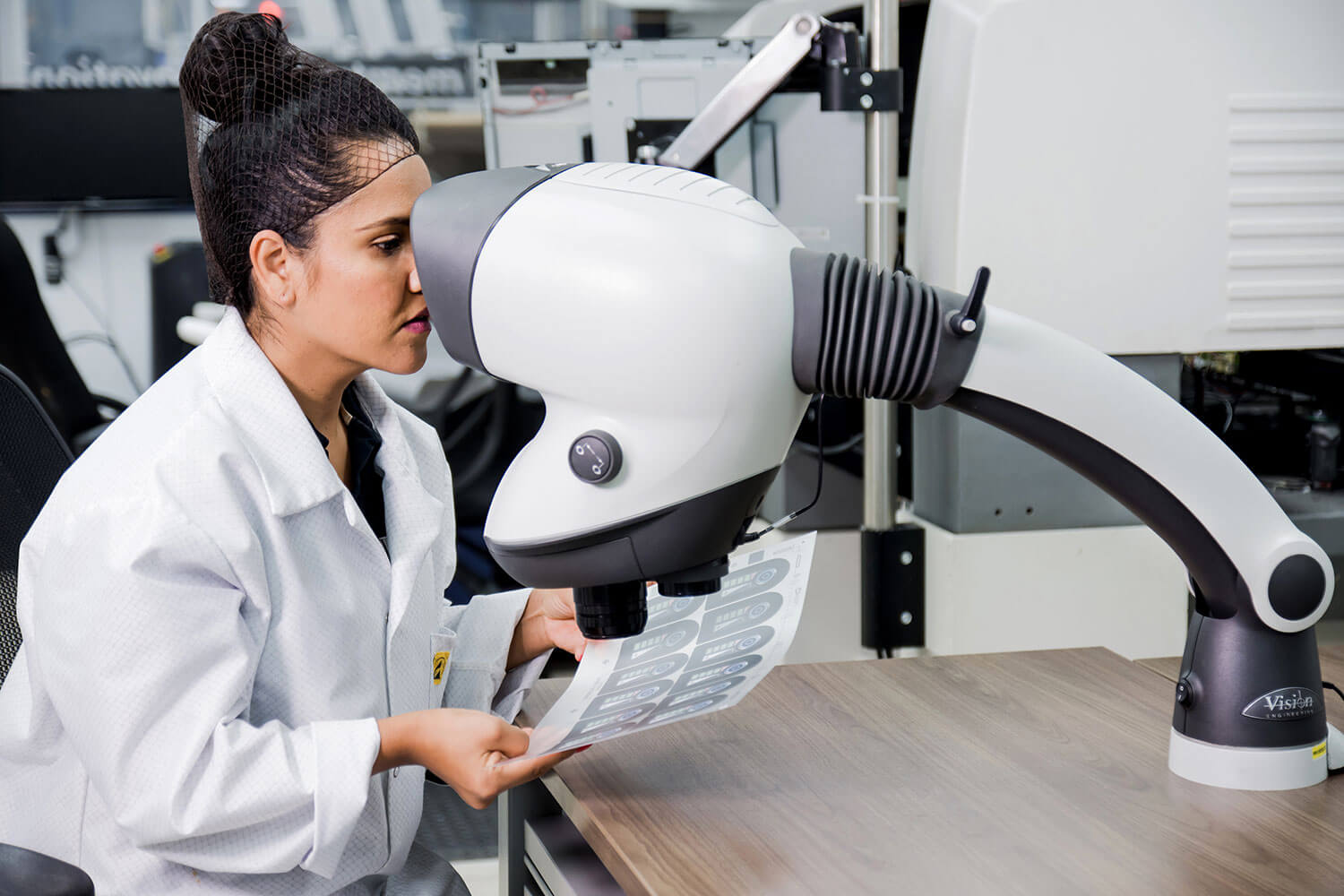Do you know the difference between follow-ups and traceability? At first glance, their goals appear to be the same: to keep a close eye on manufactured products for quality control purposes. However, the implementation of a traceability policy takes this concept even further, especially in a technologically advanced plant like Memtronik’s!
Ensuring the traceability of materials, processes, and components is the key to transparency, commitment, and integrity. Traceability makes it easy to pinpoint the source of an issue: where did the raw material come from? For which products was it used, and for which clients? Combined with rigorous quality assurance practices, this type of attention to detail can prevent a large number of manufacturing defects from happening, and limit the impact of errors that slip through the cracks by simplifying the recall process.
When it comes to components that are integral to the operation of critical devices – as is often the case with membrane switches – we believe that manufacturers should be taking even more responsibility for their products. This is especially true if these parts are destined for industries that are heavily regulated, like medical and food-related environments.
Additional reading: The membrane switch: an interface that has proven its worth in the world of medicine
In an Industry 4.0 factory, traceability and quality assurance need to go the extra mile. Meeting legal requirements simply isn’t enough. Traceability at all levels must be part of a larger analytical process that facilitates continuous improvement. It’s a matter of adopting the kind of attitude that you see with R&D projects. This vision is aligned with Memtronik’s philosophy: Innovate. Achieve perfection. Evolve.
Lack of scientific rigour: a major obstacle to innovation
But what happens if traceability and quality assurance aren’t part of a manufacturer’s DNA? The consequences can be severe, for both the end user and the industry!
One of the most telling examples is the arrival of in-mold electronics (IME) on the market. As we recently discussed, IME are just now beginning to resurface, although their first large-scale deployment dates back to 2012, with the Ford Focus.
IME technology requires particularly rigorous QA: molded directly inside the product, its circuits and LEDs cannot be modified. There is no room for error. And given that these components are mostly custom-made, best practices need to be adapted and implemented quickly to keep the line running efficiently.
When large-scale manufacturing began for the Focus, Ford’s integrated roof console supplier failed to establish a satisfactory quality assurance and traceability process. In the automotive sector, recalls are common – however, since Ford was dealing with a new technology, they violated their consumers’ trust. The result: IME took a hit.
History proves it: focusing on quality assurance means investing in your reputation, your users’ safety, and the evolution of the technology at hand. It’s a must – especially if you’re pioneering something new!
Our traceability processes are guaranteed to meet your needs. Get your project evaluated by our experts to find out how we can help improve your products.

